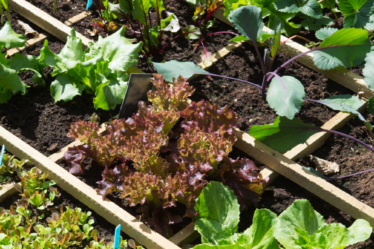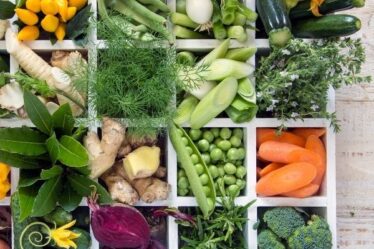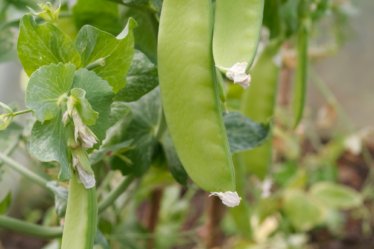
Frankly, Brussels Sprouts aren’t very common or popular vegetables, neither can they be grown all around the world. However, Brussels Sprouts come with a lot of added health benefits and are high in fiber, minerals, vitamins, and antioxidants. In fact, this is definitely a vegetable that should ideally be a part of our daily nutrition.
Brussels sprouts are similar and closely related to cauliflowers, kale and mustard greens, but they are more nutritious. They grow better in some specific regions of the world and are comparatively slow-growing plants. Still, growing Brussels Sprouts at home can be a profitable venture if your family likes the taste and if you are careful about your nutrition intake.
Is it Hard to Grow and Take Care of Brussels Sprouts?
Growing Brussels Sprouts at home isn’t hard; neither do these plants require a lot of maintenance and care. However, these are actually extremely slow-growing plants and take a lot of time to be ready for harvest. At the same time, they don’t take a lot of space to grow, so you won’t have to sacrifice more than a few blocks of your garden or more than a few containers for the whole season.
These aren’t vegetables that are hard to grow but still not seen in most regular kitchen gardens, mostly because of their lengthy growing time.
Do Brussels Sprouts Grow Well in Containers?
Brussels Sprouts grow best in cold weather and in a cool region, but they can be grown both indoors and outdoors. This is a great vegetable plant to experiment with if you only have an indoor kitchen garden and use containers and pots to grow your vegetables.
Fully grown Brussels Sprouts grow vertically, but they do not require any support. You can easily grow them in a long rectangular-shaped container or in a raised garden bed without needing to provide support stalks. These plants also don’t take up a lot of space as they grow vertically instead of horizontally and it might to possible to grow a few dozen plants in a single container inside a small space.
Therefore, Brussels Sprouts can indeed be grown in containers at home, and they won’t be much trouble to take care of.
How Can You Grow Brussels Sprouts at Home?
• Planting:
Brussels Sprouts mature the best when the weather outside is cold, but they also need a long time to grow. This is why the ideal time to plant Brussels Sprouts is mid- or late-summer if you want to get the harvest in winter. In other words, depending on where you live in the world, Brussels Sprout seeds need to be planted at least 12 to 14 weeks prior to when you are expecting your first frost of the year.
If you are planting seedlings, on the other hand, instead of seeds, they’ll need slightly less time to be ready for harvesting. Seedlings need to be prepared 6 to 10 weeks before your region is expecting frost.
• Soil:
Brussels Sprouts are dependent on good soil for their growth, so it is very important that we pay extra attention to the quality of the soil.
However the quality is of the soil you are using for Brussels Sprouts, need to be enhanced with some organic, all-purpose compost. The soil also needs to be constantly moist but not completely wet or filled with water; otherwise, the roots of the plant might start to rot when immersed in water for so long.
If possible, the soil in your garden or container should be tested for its pH level. For Brussels Sprouts, the pH level of the soil needs to be slightly high than normal, i.e. at least 6.8 for these vegetables to grow perfectly. If the pH level is not up to the mark, it can be increased by adding some lime to it.
Adding organic materials like manure, compost, green manure and leaf mould can help keep the soil moist without trapping water inside.
You can use both organic all-purpose enhanced potting soil to plant your Brussels Sprouts seeds in a raised garden bed or container or add some nutritious fertilizer to your native soil to enhance it. Either way, Brussels Sprouts need some very high-quality soil to grow.
• Sunlight:
Just like most other vegetables, Brussels Sprouts need at least 6 hours of full sunlight to grow well. Although these are plants that need cool weather and cool soil to sprout, after they’ve germinated, they need the sun’s help to grow further and mature.
It is therefore important to plant Brussels Sprouts somewhere in the garden where they’ll get plenty of direct sunlight for at least the first half of the day. Since these plants grow vertically and tall, they are not easy to overshadow with other plants, but still needs to be planted so that they have access to the sun.
• Watering:
The soil underneath Brussels Sprouts needs around 1 to 1.5 inches of water to be added every week. This means that these plants need to be water to be watered regularly but not too much, always keeping in mind whether the soil is draining well.
A good way to know whether your plants need watering is to press a dry finger into the top of the soil and check it. If your finger feels dry, your plants need watering. Mostly, the top of the soil dries out quicker than the rest below, so an adequate amount of water would be so that the top 1” or 1.5” of your soil is thoroughly drenched.
• Fertilizer:
The right kind of fertilizer is extremely important for growing healthy Brussels Sprouts, especially if you have mediocre-quality soil in your area.
Before planting Brussels Sprouts seeds, the soil needs to be thoroughly enhanced with organic compost, natural lime if the soil isn’t acidic enough, as well as water-soluble fertilizer.
These vegetable plants need to be fertilized at least thrice every season after they’ve sprouted, more if your soil is mediocre or low-quality. A balanced 10-10-10 or 14-14-14 fertilizer needs to be added a month after the plants have been planted, once after the plants are 12” high and then again after a month has passed.
• Spacing:
Brussels sprouts seeds need to be planted at least 4” apart from each other. Later, when they sprout, they need to be removed carefully from the soil and replanted 18” to 24” apart in the garden. If you are directly planting seedlings, they should also be planted 18”-24” apart.
• Temperature:
The ideal temperature for Brussels Sprouts to sprout is somewhat between 45° and 75°. They can tolerate cold weather, and actually improve their taste with every frost.
Although Brussels Sprouts can be grown in the summer, they will end up tasting bitter as this is primarily a cold-weather vegetable.
• Weeding and Pest Control:
The biggest threat to Brussels Sprouts is undoubtedly cabbage worms or specific types of caterpillars that attack both the leaves and the vegetables. These worms can be simply removed by hand, or the plants can be dusted by Bacillus Thuringiensis after every rainfall.
• Harvesting:
After around 80 to 95 days, Brussels Sprouts will gradually start to ripen on the stalk, from directly above the soil. At the same time, the leaves will start to turn yellow, indicating the beginning of the harvesting season.
Brussels Sprouts need to be snipped off or twisted off from a plant as soon as they reach 1” or 2” in diameter. The vegetables from the bottom of the plant will ripen faster than the ones at the top, so you can keep on harvesting from the same plant for weeks. It is also possible to store unwashed Brussels Sprouts in a refrigerator for a long time.
Brussels Sprouts plants aren’t very hard to manage after they’ve been planted, especially when you have the right weather and soil conditions. With just a handful of plants, you can ensure fresh Brussels Sprouts for your table for many weeks to come.
Frequently Asked Questions (FAQs) About Growing and Taking Care of Brussels Sprouts• Do Brussels Sprouts Have to be Planted Every Year?
If you live in a region where the temperature doesn’t drop below 15°F, you can definitely harvest from the same plant for two consecutive years. These are biennial plants, and they have a two-year growing cycle, so you can get at least two season’s worth of harvest from the same plant.
Besides, your Brussels Sprout plants will also produce seeds in their second year, which can be directly used to grow more plants.
• How Do You Make Brussels Sprouts Grow Bigger?
If your Brussels Sprouts aren’t growing to the size you want them to grow, it could be because the weather outside is too hot. Growth might be stunted because of heat so the best possible step to take is to wait for the weather to get a little cooler. When fall ends and winter is just around the corner, your Brussels Sprouts will probably start to increase in both size and taste.
At the same time, a great way to make sure your Brussels Sprouts grow bigger is by cutting off the top of the plant, a process known as “topping off”. By trimming off the top of the plants, you’ll give the vegetables more space to grow in size.
• Should I Trim My Brussels Sprouts Leaves?
Since Brussels Sprouts grow along the main stem of the plant, trimming off some of the larger leaves can actually give the vegetables more space to grow. The more space the vegetables get, the more they’ll increase in size.
Trimming the leaves of Brussels Sprouts plants should be an ongoing process, i.e. at least a few leaves need to be trimmed every week for the vegetables to grow properly. Besides, the top of the plant needs to be cut off at the point where the Brussels Sprouts have stopped sprouting. This process is known as “topping off” and is quite an important step for the health of your plants.
• How Many Brussels Sprouts Can You Get from One Plant?
On average, a single stalk from a Brussels Sprout plant can produce up to 3 pounds of sprouts, which comes down to as many as 100 medium-sized sprouts.
The taller the plant grows, the more fruits it can bear. If the top of a Brussels Sprouts plant is tipped off or cut off, a single plant can end up bearing more than 100 sprouts in a single season.
• Do Brussels Sprouts Like Ground Coffee?
Used coffee grounds are rich in nitrogen, which is an important nutrient all plants require. Brussels Sprouts too, just like similar vegetables like cauliflower, broccoli, kale and lettuce, thrive when used coffee grounds are used as fertilizer in the soil under this plant.
• What Can I Plant Next to Brussels Sprouts?
Good companion plants of Brussels Sprouts include beets, carrots, bush beans, celery, peas, potatoes and onions. Besides, pungent-smelling plants like garlic, mint and basil can repel aphids, Japanese beetles and blights which are natural enemies of Brussels Sprouts.
Marigold plants can also repel pests and nematodes by releasing a special substance into the soil, and Nasturtiums can repel whiteflies and squash bugs. All these plants – flowers, herbs and other vegetables – are therefore the perfect companions of Brussels Sprouts.
• Why Are My Brussels Sprouts Leaves Turning Yellow?
If the leaves of your Brussels Sprout plants are turning yellow, it can be because of the Fusarium soil fungus. This is a fungus that mostly attacks plants that grow in warm soil, which is a requirement of Brussels Sprouts.
A good and effective way to make sure this doesn’t happen is to remove the plants that have already been infected so that the fungus cannot hop from one plant to another. Keeping your garden free from weeds and making sure that the soil is moist but not wet is another way to save Brussels Sprout leaves from turning yellow.
Although not a favorite of everyone, Brussels Sprouts are still one of the most nutritious vegetables that we should definitely include in our daily meals. They are easy to grow and harvest, and profitable – a single plant giving up to a hundred sprouts in a season.


